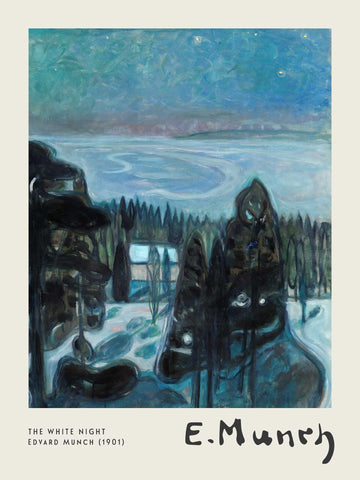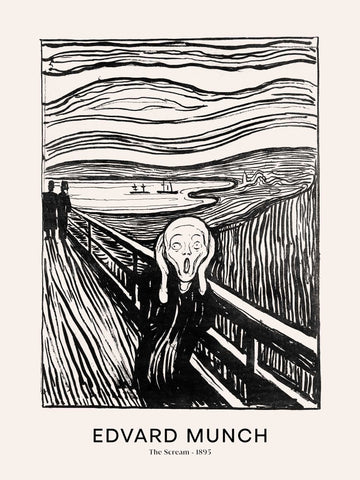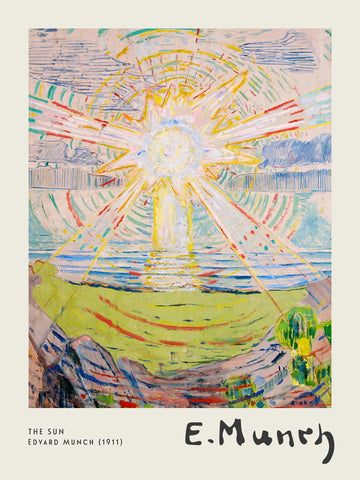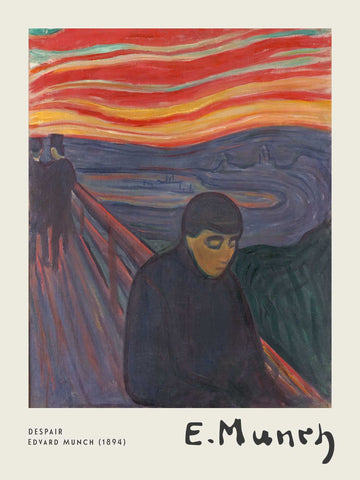8 Startling Facts About the Troubled Life of Edvard Munch
The life of Edvard Munch is one of the most fascinating in art history. His works were so powerful that they caused a sensation when he first exhibited them, but not everyone loved them. His paintings were controversial because they depicted such unsettling themes as death and insanity -- themes that would haunt Munch himself for much of his adult life.
1. Munch was the son of a doctor and a nurse.
You probably know Edvard Munch as the painter of “The Scream.” But did you know that he was also the son of a doctor?
Eighty-seven years before Munch's birth in 1863, his father, Christian Munch was born in Hvitsten, Norway. He studied medicine at the University of Oslo and later became a physician at the National Hospital (Rikshospitalet). His mother, Johanne Sophie Rasmussen was from Denmark; she worked as a nurse at Tøyen Hospital in Oslo for nearly 30 years before marrying Christian Munch. Their first child was named Carl Gustaf Emil Munch; Edvard came along two years later. The family had one more child: Johanne Sophie who would go on to become an accomplished pianist and composer herself!
2. Munch's father died of a lung disease when he was five years old, after which his mother had a nervous breakdown.
-
Munch's father died of a lung disease when he was five years old, after which his mother had a nervous breakdown.
He lost both parents before he reached adulthood and was forced to live with his older sister who was also very ill. Her death in 1887 led him to be hospitalized with depression, which affected him all throughout his adult life.
His childhood events shaped him into an artist who struggled with isolation and chronic illness; this ultimately resulted in the creation of many works that reflected on human suffering
3. In 1885, the 28-year-old Munch traveled to Paris and became part of a group of radical young Norwegian artists who lived there.
Munch was a member of the group known as the Skagen painters, who were radical and influenced by Post-Impressionism. Munch's paintings were also influenced by other artists, notably Vincent van Gogh, whose works he studied at an impressionable age. Munch admired Edouard Manet—a French realist painter who was most famous for his painting “Le Dejeuner sur l’Herbe” (1863)—and incorporated some of his techniques into his own work: he used thick paint and bright colors to convey emotion rather than reality.
4. Two years later in Berlin, Munch began to experience bouts of anxiety and depression, which were sometimes alleviated by drinking absinthe at cafes with friends (and sometimes not).
Munch developed a fondness for absinthe, a popular drink at the time that was made from wormwood, an herb thought to have medicinal qualities. Anecdotal evidence suggests it had psychoactive properties, but science has yet to prove its effect on humans.
The artist began visiting cafes with friends in Berlin and would drink the intoxicating liquor until he became too intoxicated to leave on his own. This pattern continued for two years before he finally sought medical treatment for his anxiety and depression.
5. In 1909, Munch suffered another nervous breakdown after being diagnosed with appendicitis.
In 1909, Munch suffered another nervous breakdown after being diagnosed with appendicitis. He had surgery, which lasted several weeks and left him bedridden. After the operation, he moved to Paris to convalesce before returning to Norway. During this time in Paris, he painted one of his most famous works—The Scream—which depicts a person standing on a bridge at night with their mouth open in horror.
Munch suffered from depression for the rest of his life and died at age 80 in 1944 (though some believe he was actually murdered).
6. The name for Munch's most famous painting came from an incident at a party on September 29, 1892, at the home of Christian Krohg, an artist in Kristiania (Oslo).
Known as the most famous of Munch's paintings, 'The Scream' was inspired by an incident at a party on September 29, 1892. Munch was at the home of artist Christian Krohg when he saw a woman with blood-stained handkerchief. He rushed back to his studio and painted what would become one of his most recognizable works. The painting didn't have its name until 1895 when Munch exhibited it in Berlin—it is now known simply as 'The Scream.'
Munch also painted other works that are just as well-known today: 'The Sick Child,' 'Madonna,' and even an erotic piece called 'I Love My Love.'
7. In 1920, Norway invited Munch to help establish the National Museum of Art, Architecture and Design in Oslo (it was later renamed the National Museum -- Museet), where a large portion of his works are now housed in a gallery named for him.
In 1920, Norway invited Munch to help establish the National Museum of Art, Architecture and Design in Oslo (it was later renamed the National Museum -- Museet), where a large portion of his works are now housed in a gallery named for him. Munch was one of the first artists to be invited by Norway's government to donate his works for public display. He donated over 500 paintings and 2,000 prints from his own collection as well as other donations from friends and family members.
8. He died on January 23, 1944 in Oslo at age 80 after suffering from pneumonia following surgery to remove polyps from his throat three months earlier
-
In 1944, he died at the age of 80 in Oslo after suffering from pneumonia following surgery to remove polyps from his throat three months earlier.
-
The artist lived for 31 years after his surgery.
Conclusion
Munch's life was a tumultuous journey of creativity and despair. He experienced everything from bouts of depression and anxiety to romance, marriage, fatherhood, friendships and travel. In his art he found solace through self-expression. The troubled life of Edvard Munch has inspired many people with its ability to capture emotions through imagery. In today's society we have become so accustomed to seeing images on screens rather than looking at each other face-to-face that we have lost touch with our humanity as well as our ability to express ourselves through words, music or dance.













